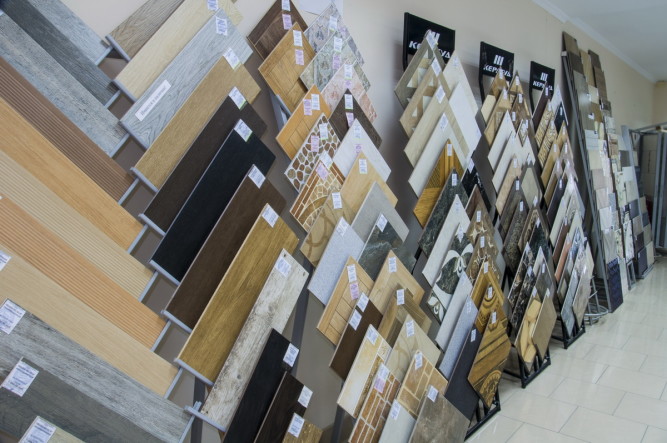Repair of tiles on the floor: how to close splinters
Tiles on the floor and walls sometimes need repair. Tile, depending on the strength class and quality of laying, falls under the influence of different intensities. Some fragments do not survive and cracks and chips appear on the surface. To eliminate such shortcomings, it is important to know the rules of repair, and why this or that problem arose. Consider, what factors lead to damage and how to repair the coating yourself.
Cracks or chips on the tile are more likely to occur due to point impacts
Causes of defects
To begin with, one part of the question needs to be addressed: why there are defects on the tile? There are many explanations for this.
At first sight, on processing of vertical surfaces loading is practically not found out. However, cracks on it are not uncommon. There are reasons:
- point strikes on the coating;
- mobile base, example, wood;
- hanging on the walls of heavy furniture;
- damage to the tile during drilling or other work;
- blows from the opposite side of the wall;
- temperature and humidity differences;
- microcracks in the coating.
To find out, why the tile cracks in the bathroom in the first place pay attention to the microclimate in the room.
As for gender, his condition is influenced by the above factors.
Most often, the floor needs repair
Cracks are caused by a heavy object falling or a load from furniture. Particularly dangerous is the point effect. Low grade tiles increase the risk of surface damage even in everyday use. Separately highlight the quality of laying. If there are voids in the solution or the surface has irregularities, in the future, when loaded on such a tile will break it and will need to replace the fragment. Repair of tiles in the bathroom is often associated with a violation of the technology of installation on such capricious surfaces, as a tree or GCL. Wood expands with increasing humidity, therefore, technological gaps remain, seams are made more, and also elastic glue is used.
If repairs could not be avoided, spend it well, ??so as not to face similar problems again.
Necessary tools and materials, defect masking
Repair of ceramic tiles with your own hands on the walls or floor is performed using conventional tools. Need a chisel, flat screwdriver and Bulgarian for disassembly. Remove glue residue with sandpaper. To close with your hands a small chip of tile on the floor, use ordinary grout. You will also need glue, if the cracks require replacement of the element, notched trowel, level and Kiev. Read more about the rules of repairing tiles with your own hands.
If the damage is minor, restoration of a covering without disturbance of its integrity will be suitable. In other words, small cracks or chips on the edges of the tile are hidden without replacing the element.
The simplest ways to mask defects are grout and self-adhesive film
The easiest chip is laid with a fugue. Select such a mixture, so that it does not differ from the general background in its tone and structure. If you want to use white mastic on a colored background, then adjust the width of the seam. Keep in mind, that a single wide joint will spoil the overall impression of the coating. To close the chip with grout, it is enough to apply the raw mass on top of the defect and level the seam. After drying, the plane is brought to perfect.
There are also small cracks in the tiles with decorative stickers. The best option is to use film, self-adhesive. Another way is to close the defect with any accessory, example, towel holder. If the material cracks further, it is better to glue a new one at once.
fragment replacement
The most effective repair of ceramic tiles is the complete dismantling of the damaged part. This method is used in the case, if local restoration of damage is impossible.
Replacement of tiles on the wall or floor is as follows:
- Stripping seams. This work is carried out carefully so as not to touch the adjacent parts. If the cracks cover the entire tile, you can walk a Bulgarian.
- Tile removal. Pick up the element and effortfully remove it from the surface.
- Stripping glue. Remove the old mortar from the floor and wall base as much as possible.
- Overview of neighboring elements. If a nearby tile is damaged or the quality of the masonry has been compromised, it is better to remove it and translate again.
- Tile installation. Fastening is carried out on glue. It is more convenient to apply it on the tile itself. Watch out, to reach the same level with another coating.
- Grouting seams. Be sure to nail it to the pallets only on the back and two sides not the front. Choose the material, as on the other tile. If this is not possible, it is recommended to completely update the seams.
Stages of replacement of a separate part
If the tile cracks through voids in the solution, re-translate bad items. They are easy to learn by tapping.
With quality work done with your own hands, you will soon face the need for re-repairs.



